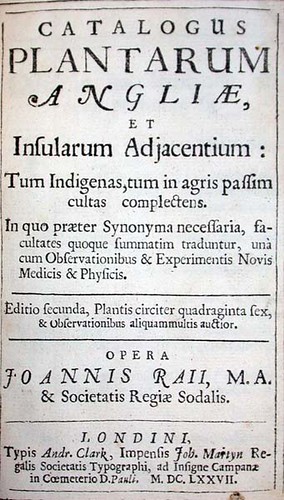John Ray: Catalogus plantarum Angliae
London: 1677
Sp Coll Hunterian L.7.9
Known as the 'father of English natural history', John Ray paved the way for Linnaeus in describing the structure and function of plants. Making the idea of the species his starting point, he maintained that all the characteristics of a plant should be taken into consideration when attempting to classify them.
Ray's love of botany was probably inspired by his mother who was known for her knowledge of medicinal herbs. He held a number of posts at Trinity College, Cambridge, where he kept a small garden: here he planted specimens that he had collected or which his friends had sent to him, and investigated the differences between specific varieties of plants and trees. Aware of the limitations of existing literature and expertise on the subject, he decided in the early 1650s to work on a catalogue of plant life that he had found in and around Cambridge; this work was published in 1660. Ray went on to explore the rest of Britain and Europe, often accompanied by his friend, the naturalist Francis Willughby. Together, they agreed to research the complete natural history of living things.
This is the second edition of Ray's catalogue of English plants, originally published in 1670 and dedicated to Willughby. It is meticulously thorough and noted for the medical and pharmacological notes which are included in the plant descriptions, highlighting Ray's belief that God created the plants for a purpose.
Previous page ; next page





